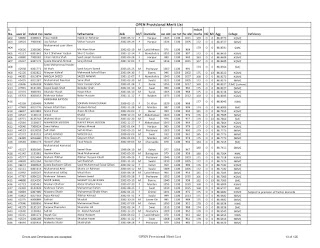Chap No. 12 ELECTROCHEMISTRY
Chap
No. 12 ELECTROCHEMISTRY
1. The
branch of chemistry that deals with the inter-conversion of the chemical
changes and electricity is called electrochemistry.
2. The
flow of current in metals are due to flow of electrons.
3. The
passage of electricity through solutions of acids, bases and salts in accompanied
by a chemical change.
4. The
substance which in solution or in molten state conducts electricity is called
an electrolyte named by Arhenius.
5. The
substance which completed converted into ions in the solution or in molten
state is called a strong electrolyte.
6. The
substance which is partially dissociated into its ions is called weak
electrolyte.
7. Electrolytic
conduction or electrolysis is a phenomenon in which chemical changes takes
place due to passage of the electric current at the electrodes.
8. Strong
electrolyte:
·
NaCl
·
NaOH
·
H2SO4
9. Weak
Electrolytes:
·
NH4OH
·
H2CO3
·
CH3COOH
10. Oxidation-reduction
reactions are responsible for the spoilage of food.
11. Preservatives
in food items act as reducing agents.
12. Oxidation
may also be linked with aging of humans.
13. Vitamin
C and vitamin K are natural reducing agents.
14. The
vitamin C in lemon juice can be used to prevent oxidation on the cut surface of
an apple, to keep it from turning brown.
15. Natural
reducing agents can slow the pace of oxidation in the human body.
ᴥ-----ᴥ-----ᴥ
Oxidation-Reduction
16.
|
Concept
|
Oxidation
|
Reduction
|
|
Classical
|
Addition
of oxygen
Removal
of hydrogen
|
Removal
of oxygen
Addition
of hydrogen
|
|
Electron
transfer concept
|
Loss
of electrons
|
Gain
of electrons
|
17. The
substance which oxidizes other and itself get reduced during this process is
called oxidizing agent.
18. The
oxidation number of oxidizing agent decreases.
19. The
substance which reduces other substance and itself gets oxidized during this
process is called reducing agent.
20. The
oxidation number of reducing agent increases.
21. The
oxidation state is the apparent charge positive or negative which an atom would
have in a molecular or ion.
22. Valency
is only a number while oxidation state indicates the positive or negative
character of the atom.
23. The
oxidation number of free element is zero.
24. The
oxidation number of hydrogen in its compound is +1 but in metal hydrides it is
-1 e.g. NaH and MgH2.
25. The
oxidation number of oxygen in the compound is-2 but in peroxides it is -1 and
in OF2 is+2.
26. The
oxidation number of group I, II and group III are +1,+2 and +3 in compounds.
27. The
oxidation number of group VII are -1 in binary compounds.
28. The
algebraic sum of the oxidation numbers of all atoms in a molecule is zero.
29. The
algebraic sum of the oxidation numbers of all the atoms in an ion is equal to
the charge on the ion.
30. When
an atom is oxidized, its oxidation number increases.
31. When
an atom is reduced, its oxidation number decreases.
ᴥ-----ᴥ-----ᴥ
Balancing
Oxidation Reduction Equations
32. There
are two symmetric ways for balancing these equations:
·
Oxidation number method
·
Half reaction method
33. Half
reaction method is also called the ion electron method.
34. No
oxidation number is assigned in ion electron method.
35. Ion
Electron method applies to redox equations taking place in aqueous medium.
ᴥ-----ᴥ-----ᴥ
Steps
of Balancing Redox Equations by Oxidation Number Method ;
36. Write
down the skeleton of redox equation.
37. Write
the oxidation numbers over the symbol of the atom whose oxidation number
changes during reaction.
38. Identify
the oxidizing and reducing agents, which undergo change in their oxidizing
number.
39. Indicate
the change in oxidation number by an arrow which show the number of electron
lost or gained.
40. Multiply
the formula of the oxidizing and reducing agents by a number such that the
number of electrons lost and electrons gain becomes equal.
41. Balance
the rest of equation by simple inspection.
ᴥ-----ᴥ-----ᴥ
Steps
of Balancing The Redox Equations By The Half Reaction Method;
42. Split
the equation to two half cells, one for oxidation and other for reduction.
43. In
neutral medium add H2O and H+ ions can added to each side
independently.
44. In
acidic medium, H2O can be added to lower number of oxygen containing
side and H+ ions can added to that side where the number of oxygen
is high.
45. In
basic medium, H2O can be added to side that contains higher number
of oxygen and OH- ions can added to that side where the number of
oxygen is low.
46. Balance
the charge by adding electrons to either side.
47. Multiply
each half cell by such number, that the number of electron lost becomes equal
to number of electrons gain.
48. Add
the two half cells reaction, resulting from the multiplications.
49. Cancel
anything appearing to both sides in the net equation.
50. Check
the final equation by counting the number of atoms and the net charge on either
side.
ᴥ-----ᴥ-----ᴥ
Reaction
of Oxidizing Agents
51. K2
Cr2 O7 and KMnO4 are strong oxidizing
agents in the presence of sulphuric acids.
52. Potassium
dichromate is reduced from +6 oxidation state to +3 oxidations state.
53. Potassium
dichromate oxidizes iodine to iodide.
54. Potassium
dichromate oxidizes ferrous (+2) salt to ferric (+3) salts.
55. KMnO4
in the presence of sulphuric acid oxidizes KI to I2.
56. KMnO4
oxidizes oxalic acid in the presence of sulphuric acid to CO2.
ᴥ-----ᴥ-----ᴥ
Reaction
of Reducing agents
57. H2S
and SO2 are reducing agents in the presence of acids.
58. H2S
reduces halogens to halogen acids.
59. H2S
reduces ferric salts to ferrous salts.
60. SO2
react with KIO3 and reduces it to I2.
61. SO2
reduces KMnO4 in acidic medium.
ᴥ-----ᴥ-----ᴥ
Electrodes
62. Electrodes
are metallic plates, wires or rods through which current enter and leave the
electrolyte in a cell.
63. The
positive electrode is called anode.
64. The
negative electrode is called cathode.
65. Anions
move towards anode and get discharged by giving their electrons to the
electrode.
66. Cations
move towards the cathode and gain the electrons and neutralize their charge.
67. Oxidation
occurs at anode.
68. Reduction
occurs at cathode.
69. The
number of electrons gained in reduction is equal to the number of electrons
lost in oxidation.
ᴥ-----ᴥ-----ᴥ
Faraday’s
Law of Electrolysis
70. Michal
Faraday in 1813 gave a relation between the quantity of electricity passed and
the amount of substances deposited at the electrode.
71. First
law: The amount of any substance (W) deposited or liberated at an electrode is
directly proportional to the quantity of electricity or charge (Q) passed.
ü W
α Q
ü W
α It
ü W
α ZIt
72. Second
Law: If the same amount of electricity is passed through different
electrolytes, the amounts of different substances deposited are in the ratio of
their chemical equivalent.
ü W
α chemical equivalent (e)
73. Q
α It and Q α e, adding these those gives us Q α Ite = Ite/F
74. F
is faradays constant which has a value of 96500c.
ᴥ-----ᴥ-----ᴥ
Electrode
potential
75. Potential
difference set upped between metal and its solution is called single electrode
potential.
76. The
potential set up when an electrode is in contact with one molar solution of its
own ions at 298K is known as standard electrode potential of the element.
77. Standard
electrode potential is represented by E0.
78. Standard
electrode potential of hydrogen has arbitrarily been chosen as zero.
79. The
standards electrode potentials of other elements can be found by comparing them
with standard hydrogen electrode potential.
ᴥ-----ᴥ-----ᴥ
Standard
Hydrogen Electrode, SHE.
80. It
consists of platinum, the electrode is suspended in 1M HCl solution at 250
C.
81. Platinum
is covered with layer of finally divided platinum electrolytically for the
purpose to increase its surface area and increase its reaction.
82. Pure
hydrogen gas is bubbled over the platinum electrode at one atmospheric
pressure.
83. Reduction
as well as oxidation so to be measured potential is the standard electrode
potential of the other electrode by comparing it with the standard hydrogen
electrode potential.
84. Hydrogen
electrode when coupled with the electrode which has postive E0Red
value, the electrode will act as cathode and SHE as anode
85. If
SHE is coupled with Zn electrode then reduction will take place at SHE, because
the value of E0Red is negative value as compared to SHE.
86. E0Red
of Cu is value of +0.34V.
ᴥ-----ᴥ-----ᴥ
Measurement
of Electrode potential
87. The
two solutions are interconnected by salt bridge.
88. The
potential difference is measured by voltmeter which gives the potential of the
electrode as the potential is SHE is zero.
89. An
oxidation or reduction may take place at SHE depending upon the nature of the
electrode which is coupled with it.
90. Zinc
has greater tendency to give off electrons than hydrogen.
91. The
oxidation potential of Zinc is 0.76 volts.
92. The
reduction potential of Zinc electrode is -0.76 volt.
93. Standard
reduction potential of copper is 0.34 volts.
94. E0cell
= E0red + E0oxi
ᴥ-----ᴥ-----ᴥ
Cell
Representation
95. A
cell can be represented in one single line.
96. The
anode is represented at the left separated by a vertical line from its ionic
solution.
97. The
cathode is at extreme right separated by a vertical line from its ionic
solution.
98. The
two half reactions are separated by two parallel vertical lines which indicate
the salt bridge.
99. Zn/Zn+2
(1M) // Cu+2 (1M) / Cu
100.
A//C
ᴥ-----ᴥ-----ᴥ
Electrochemical
Cells
101.
Types:
·
Electrolytic cell
Ø Purification
of metals
Ø Charging
of batteries
Ø Nelson’s
cell
·
Voltaic or Galvanic Cell
Ø Dry
cells
Ø Lead
storage batteries
Ø Daniel
Cell
102.
In electrolytic cells, the electrical
energy from an external source is used to bring about a chemical change.
103.
In Voltaic or Galvanic cell, the
chemical energy is converted into electrical energy.
104.
Electrolytic cell: Electrical → chemical
ᴥ-----ᴥ-----ᴥ
Electrolytic
cell
105.
Its device in which non-spontaneous
reaction is carried out by passing electric current.
106.
When an electric current is passed
through electrolytic solution, its ions move towards opposite charged
electrodes.
107.
The anions liberate the electrons at
anode and are said to be oxidized.
108.
The cations surround the cathode,
consume those electrons and get deposited at the electrode.
109.
The number of electron lost is always
equal to number of electrons gained.
ᴥ-----ᴥ-----ᴥ
Electrolysis
of Aqueous NaCl
110.
The formula of caustic soda is NaOH.
111.
NaOH
is manufactured on large scale by electrolysis of aqueous solutions of
NaCl.
112.
The electrolysis is carried out in a
cell called Nelson’s cell and also by Downs cell.
113.
The graphite anode is suspended in
solution.
114.
Cathode is made of a sheet of perforated
steel.
115.
2NaCl→2Na+ 2Cl-
116.
At anode 2Cl- →Cl2
+2e-
117.
At Cathode 2H2O + 2e- →
H2 + 2OH-
118.
Overall reaction 2Cl- + 2H2O
→ Cl2 + 2Na+ + H2 + 2OH-
119.
2Na + 2OH → 2NaOH
120.
Cl2 is released at anode.
121.
H2 is released at cathode.
122.
NaOH is released at the bottom of the cell
ᴥ-----ᴥ-----ᴥ
Advantages
of Electrolytic cell
123.
Charging of battery
124.
Manufacturing or extractions metals
125.
Purification of metals
126.
Plating of metals
ᴥ-----ᴥ-----ᴥ
Electroplating
127.
The metallic article to be electroplated
is made as cathode.
128.
A sheet of pure metal to be deposited is
made is anode.
129.
Salt of the metal to be deposited is
taken as the electrolyte.
130.
When current is passed, the metal from
anode is deposited on the cathode.
ᴥ-----ᴥ-----ᴥ
Voltaic
Cell
131.
In the voltaic cell a spontaneous
oxidation reduction reaction is carried out and electrical current is produced
132.
Voltaic cell contains two half cells.
133.
At one electrode electrons enters
resulting in reduction reaction while the other they leave the solution and
oxidation takes place.
134.
A typical example of voltaic cell is
Daniel cell.
ᴥ-----ᴥ-----ᴥ
Daniel
Cell
135.
This cell has a zinc electrode dipped
into 1M ZnSO4 solution and a Cu electrode immersed in Cu2+ ions.
136.
The two half cells are connected
externally through a metallic wire.
137.
The two half cells are internally
connected by a salt bridge.
138.
The salt bridge contains an aqueous KCl
solution in gel.
139.
Zinc tends to lose electrons more
readily than cu.
140.
At Anode: Zn → Zn2+ + 2e-
141.
At Cathode: Cu2+ + 2e- → Cu
142.
Net reaction: Zn + Cu2+ → Zn2++ Cu
143.
E0oxi = + 0.76 V
144.
E0red = +0.34 V
145.
E0cell = 1.10 V
146.
Zn(s) / Zn+2(aq)
(1M) // Cu+2(aq) (1M) / Cu(s)
ᴥ-----ᴥ-----ᴥ
Batteries
147.
Primary battery: not reversible
148.
Secondary battery; reversible and
rechargeable
149.
Solar battery; photoelectrical cells
150.
Fuel cells: super batter and high charge
density
151.
Examples :
Ø Primary
→ dry cell
Ø Secondary → lead storage battery
ᴥ-----ᴥ-----ᴥ
Primary
Batteries
152.
The container is made of Zinc which act
as Anode.
153.
The container is lined with porous
paper.
154.
A graphite rod in the center of the cell
acts as cathode.
155.
Electrolyte is a moist mixture of :
·
NH4Cl
·
MnO2
·
ZnCl2
·
Powdered carbon
156.
At Anode: Zn → Zn2+ + 2e-
157.
At Cathode: 2MnO2 + 2NH4+
→ Mn2O3 + 2NH3 + H2O
158.
Net Reaction: Zn + 2MnO2 +
2NH4+ → Zn 2+ + Mn2O3
+ 2NH3 + H2O
159.
NH3 + Zn2+ forms
complex ion.
160.
This is irreversible because Zn and NH4+
are consumed and cannot be reversed to their initial states.
ᴥ-----ᴥ-----ᴥ
Secondary
Batteries
161.
It is combination of two or more voltaic
cells of the same kind.
162.
The anode is made of Pb plates.
163.
The cathode is made of PbO2.
164.
The electrolytic solution is used as
that of H2SO4.
165.
At Anode: Pb + H2SO4 →
PbSO4 + 2H+ + 2e-
166.
At Cathode: PbO2 + H2SO4
+ 2H+ + 2e- → PbSO4 + 2H2O
167.
Net Reaction; Pb + PbO2 + 2H2SO4
→ 2PbSO4 + 2H2O
168.
When the cell works, insoluble PbSO4
is formed and gets deposit on each electrode, H2SO4 is
consumed and water is formed.
169.
This battery is Reversible and if
current external source is reversed, the above reaction will also reverse. The
2PbSO4 + 2H2O will reforms Pb, PbSO4 and H2SO4.
ᴥ-----ᴥ-----ᴥ
Fuel
Cells
170.
An electrochemical device used for
continuously converting chemicals into direct D.C current is called fuel cell.
171.
It consists of two electronic
electrodes, separated by ionic electrolyte with the provision of continuous movement
of fuel.
172.
The fuel cane be:
·
Solid
·
Liquid
·
Gas
·
Solution
173.
Their operating time is unlimited.
174.
Electrodes are hollow tubes made of
porous compressed carbon impregnated with platinum.
175.
The electrolyte is KOH.
176.
Hydrogen is oxidized at anode giving
electrons to the outer circuit while the electrons are accepted at the cathode
where reduction occurs and in this way current flows.
177.
2H2 → 4H+ + 4e-
178.
O2 + 4H+ + 4e-
→ 2H2O
179.
2H2 + O2 → 2H2O
180.
The major drawback of fuel cell is that
they are very costly.
181.
The gases must be of very high purity
otherwise even a trace of impurity may poison the platinum which severely
degrades its efficiency.
182.
The efficiency of fuel cell is 75%.
ᴥ-----ᴥ-----ᴥ
Corrosion
183.
The slow and continuous eating away of
any metal by the action of metal is called corrosion.
184.
Pure iron is silvery while corroded are
reddish brown.
185.
The impure or stained portion act as
cathode.
186.
The pure iron act as anode.
187.
Anode: 2Fe → 2Fe+2 + 4e-
188.
Cathode;
2H2O + O2 + 4e- →4OH-
189.
Fe (II) is oxidized by oxygen to
Fe(lll), Fe2+ → Fe3+ +e-
190.
Fe3+ + 3OH- →
Fe(OH)3
191.
The rust mass is soft and porous in
nature and therefore cannot prevent further atmospheric action.
192.
Once the corrosion starts it continuous
until the whole iron piece is rusted.
193.
Corrosion cannot be completely
eliminated or prevented.
ᴥ-----ᴥ-----ᴥ
Corrosion
194.
Coating the metal with zinc is called
galvanizing.
195.
Coating the metal with tin is called
tinning.
196.
Phosphate bath consists of
orthophosphoric acid with zinc and manganese phosphate.
197.
Metal is generally coated with sacrificial
metals.
Prevention
of corrosion is done by:
198.
Coating
199.
Electroplating with nickel or chromium
200.
Dipping iron into phosphate bath
201.
Alloying the metal such as steel
formation
202.
Cathodic protection







